In the battle of ecommerce vs. brick & mortar, the challenge of enhancing the customer experience and maintaining service standards, while expanding into new markets, is keeping three diverse brands on their toes.
Long-term success, however, still depends on two elements—happy customers and a motivated staff committed to serving them. In an animated discussion “Keeping Physical Stores Relevant in the Digital Age” at RetailSpaces 2015, execs from Chick-fil-A, Warby Parker and Whole Foods shared a few of their strategies for maintaining each brand’s unique edge in a competitive market.
Moderated by Lee Peterson, EVP, Brand, Strategy & Design for WD Partners, the discussion featured:
- Sarah Apgar, Director of New Stores and Facilities, Warby Parker
- John McCleskey, Vice President, Restaurant Development, Chick-fil-A
- Gabrielle Rosi, Senior Design Director, Whole Foods
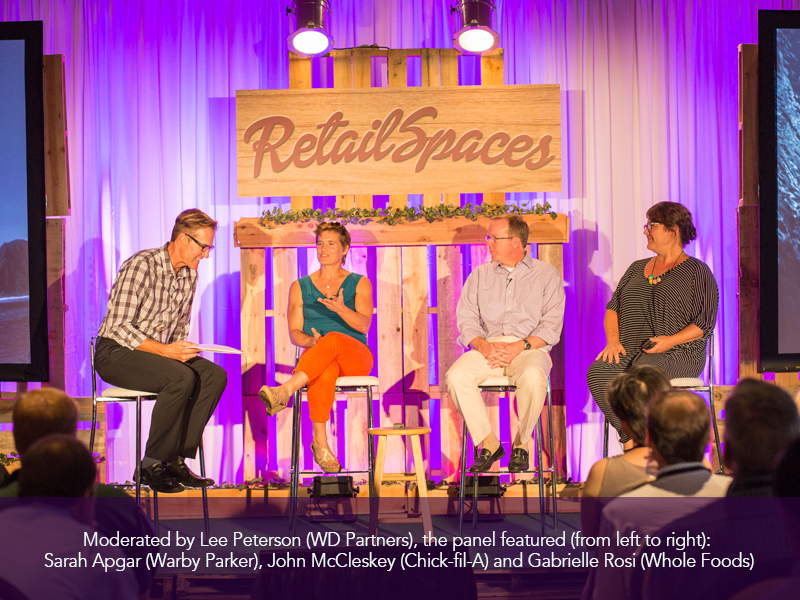
Moving into Bricks & Mortar
Now valued at well over $1 billion, Warby Parker is an American brand of prescription eyeglasses and sunglasses founded in 2010. Their move from cyber to cement is a 21 Century phenomenon. “People fell in love with Warby Parker online. We never intended to have a bricks and mortar location,” says Apgar, a veteran who spent time with the Army Corps of Engineers in Iraq.
Warby now has a limited number of showrooms in strategic locations across the U.S. The business began and continues to thrive as an ecommerce site, offering a variety of mid-priced frames with a unique option – customers are allowed to try on up to five pairs of glasses at home, and then send them back free of charge. Then they can go online and order the frame or frames they like best.
The eyewear retailer developed its brick & mortar locations because customers were demanding them. “We started to have customers write in and call in to ask for a place to go,” says Apgar. “So our founder (Neil Blumenthal) would invite customers over to his New York City apartment. He’d put the glasses on the dining room table. The apartment got so crowded, he eventually had to open a store. And people flooded our first showroom the way they flooded his dining room.”
From Seattle to Miami, Warby Parker now has more than 25 locations nationwide, including four in New York City, two in Washington, DC, and six across California.
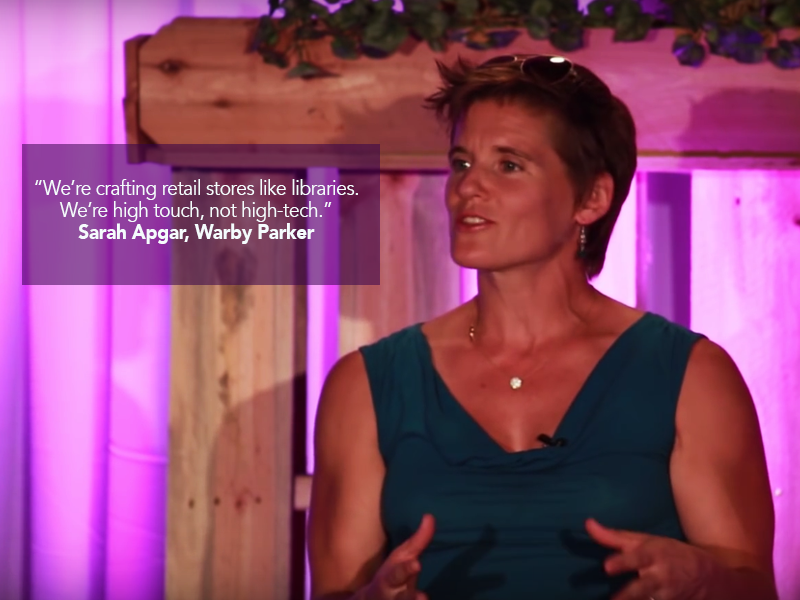
Get on the Bus
Bricks and mortar gave way to rubber and steel, as Warby Parker “slowly found its way in retail,” Apgar says. Creating a sort of interstate eyewear bookmobile, Warby purchased and refurbished a yellow school bus (the Warby Parker Class Trip bus) that it drove around the country for nine months, selling glasses while building a database of consumer feedback.
“One of the nuggets I want to leave you with is that we now have stores, which we’re using the way we used Neil’s dining room – as learning labs.”
Immaculate Preparation
In its New York headquarters, Warby Parker’s two largest teams are its tech and customer service teams, says Apgar, who stresses the importance of using technology to create an inspiring, seamless shopping experience. “Technology should be supporting an experience, not driving the experience,” she says. In a sense, “We want the technology to go away…but that (tech) should enable customer to do what they want to do throughout their journey.”
Based on her military training, she introduced the concept of a “dress rehearsal” when Warby Parker was planning to open its first Manhattan location in Soho. Initially, the concept had her coworkers scratching their heads.
“In the military, the ‘dress rehearsal’ is the golden staple that lets you know you’re ready to accomplish a mission,” Apgar explains. “As we were planning our opening, I felt that obviously we should have ‘dress rehearsals’ in the stores. Dress enables them to train advisors and enables us to test every path customers will take throughout the store in a controlled environment.
“Now, Warby Parker has ‘dress’ 48 hours before all of our stores open.”
People Make The Difference
Known throughout the fast-food industry for contented employees and low turnover, Chick-fil-A’s secret to success is “our franchise agreement,” says McCleskey, who has been with the company for more than 20 years.
Based in suburban Atlanta, for decades Chick-fil-A has expanded operations around a distinctive fast-food business model, which requires an extremely low initial investment (just $5,000), allowing leadership to choose from a large, enthusiastic pool of aspiring franchisees.
The company retains ownership of each restaurant, selects the location and builds it. The result? Incredibly high sales per store, higher than #2 McDonald’s.
Following Starbucks Lead
While Chick-fil-A continues to emphasize employee and customer satisfaction, staying current with technology matters too.
An admitted fan of Starbucks’ customer apps, McCleskey says Chick-fil-A is moving forward by modeling many of its customer apps on the Starbucks model, including a catering app and one that allows customers to pay in advance. “My advice is to find out what the customers want from you and deliver it in the best way possible.”
Expanding Without Losing the Personal Touch
Peterson asked each panelist to name their brand’s “secret sauce.” Whole Foods’ Rosi stressed that her brand thrives because its team members love their jobs and have the opportunity to shape their working environments.
She sites her own unique career path. “I haven’t interviewed for a job at Whole Foods since 1999. I’ve always created my own job and my own path.”
“We put a lot of training into our members. It’s important that they drink the Kool Aid,” she says. “We empower team members to be best people they can be. It makes people like me want to stay there a long time.”
Comparing the environment to crunchy “Portlandia,” Rosi says Whole Foods is known for providing free samples, from slicing cheese and apples while shoppers line up to opening jars of pickles and other sealed containers to let customers find the level of sweet vs. sour they’re looking for.
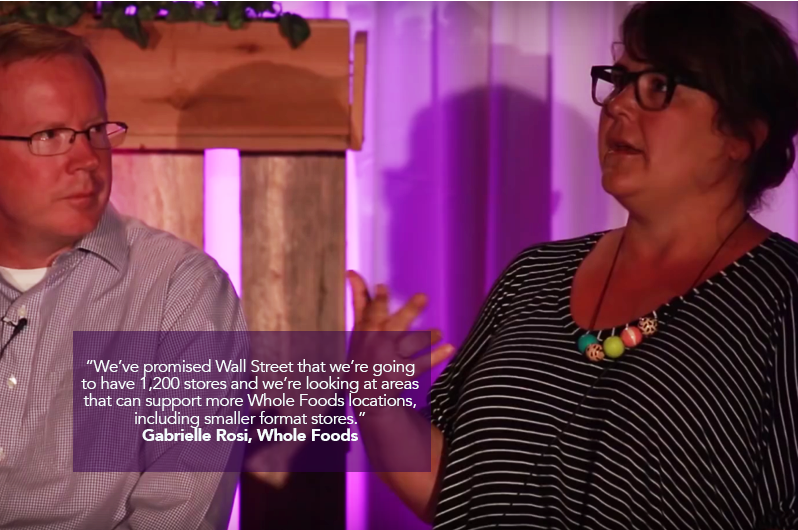
Over the next few years, Rosi’s task will be keeping this gourmet country store feel while continuing to expand into new markets. “We’ve promised Wall Street that we’re going to have 1,200 stores and we’re looking at areas that can support more Whole Foods locations, including smaller format stores,” she says. “We’re expanding internationally, including locations in Canada, England and Scotland.”
However, her brand won’t become homogenized, Rosi promises, adding that each store has a large amount of autonomy. “We have nine separate regions and lots of Whole Foods’ decisions are made on a regional level,” she says. “Each region and each store figures out what its customers want.”
Built from the Bun Up
A national chain built on the concept of ‘a piece of chicken, two pickles and a bun, Chick-fil-A’s “local operators are our ‘secret sauce.’ It’s an individual selection to become a franchisee,” says McCleskey.
“We get about 30,000 applications a year. So the process is pretty intense because there are so many. And we always try to find the right person for the right market.”
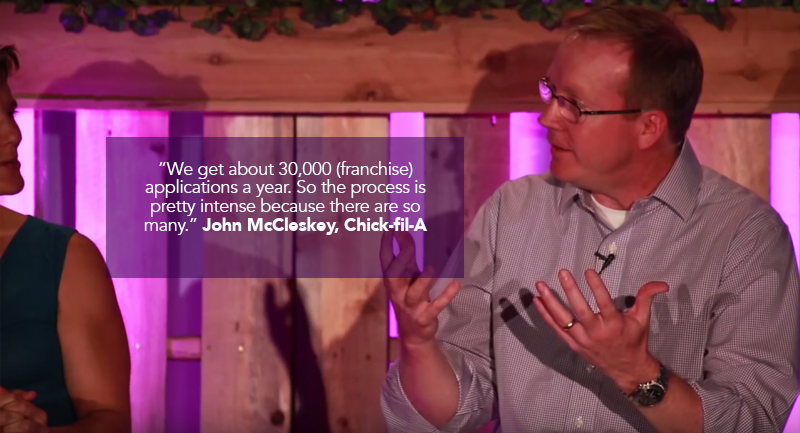
Continuing this thought, he elaborates: While Chick-fil-A opened a three-level location in Manhattan, its first New York City restaurant, “what we’re really excited about is Oscar, the franchisee.”
“Urban” Trumping “Suburban” in 2020s?
Addressing a trend of urban revitalization, Petersen wryly asked the audience “Will we be looking at a suburban ghetto?”
The issue resonates with Chick-fil-A. Known for its convenient locations in Southern and Middle-American suburban malls, the chain is responding to a nationwide trend that sees the younger demographic moving back into the cities.
“We grew quickly following suburban expansion in the 1990s,” says McCleskey, who adds that his restaurants often opened locations adjacent to Lowe’s and Home Depot.
Now, however, metropolitan living is back and Chick-fil-A is focusing on creating a template that works in an urban environment. “Suburban expansion is not where it was. People want to be in high-density environments,” he emphasizes.
“We see the suburban sprawl wanting to come back in. So growth for us will come in form of in-line locations, figuring out an urban model that works for us,”
says McCleskey, citing the chain’s new locations in Manhattan and downtown Washington, DC. “We’re figuring out small parcel opportunities.”
Though Chick-fil-A is known for quality customer service, other fast-food restaurants have begun focusing on customer service too. “Other brands are catching on and upping their games.”
You can watch the full discussion from RS'15 below.

Posted by
Physical Retail Reimagined.
RetailSpaces is a community for store development and design innovators.
March 29-31, 2026 | San Antonio, TX
Learn More!
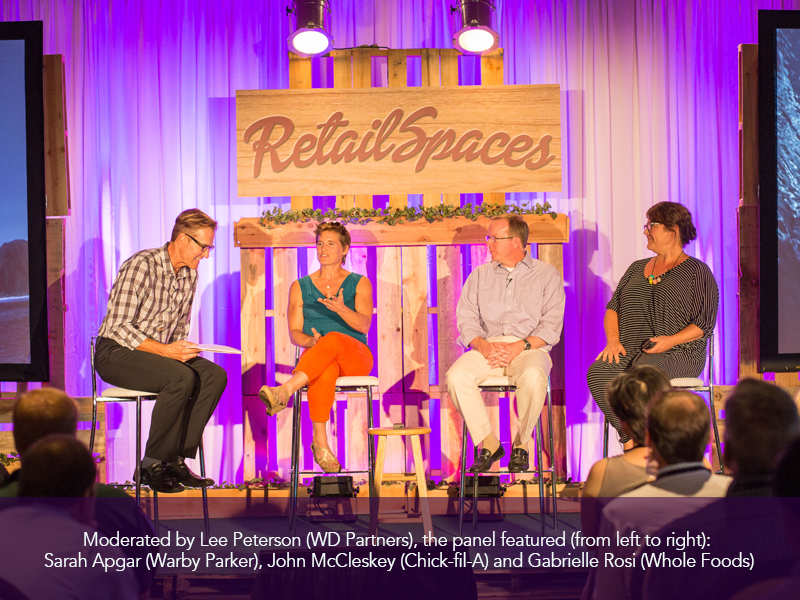

-4.png)
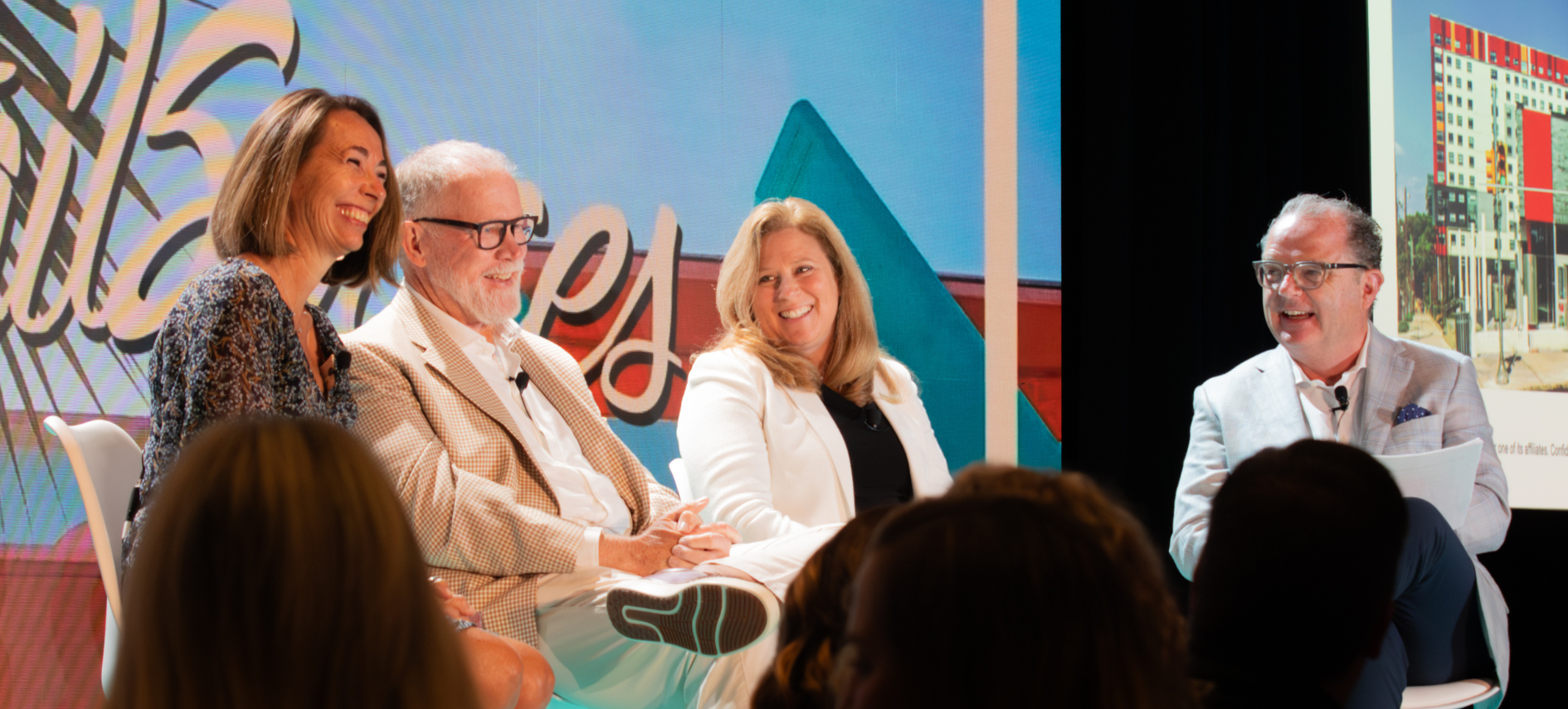
-4.png)
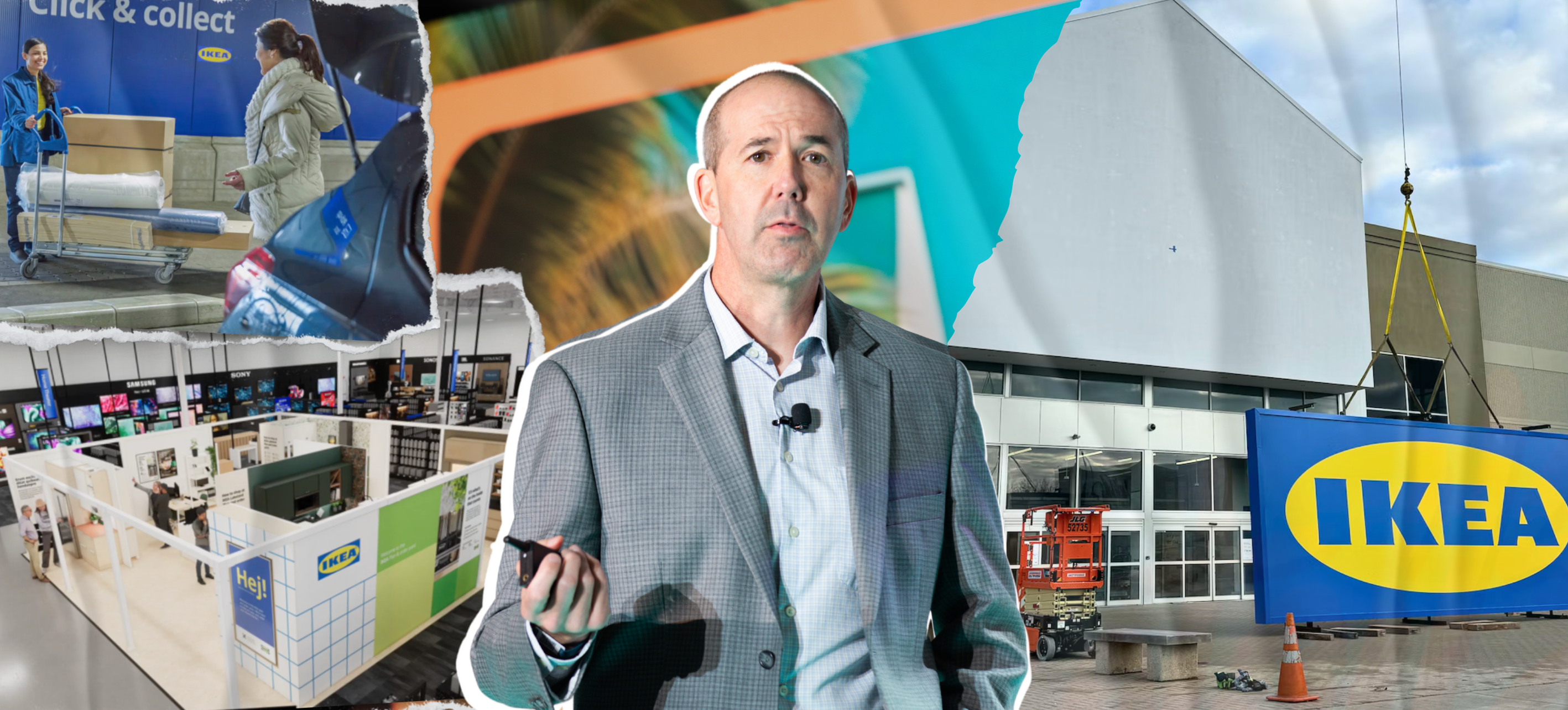
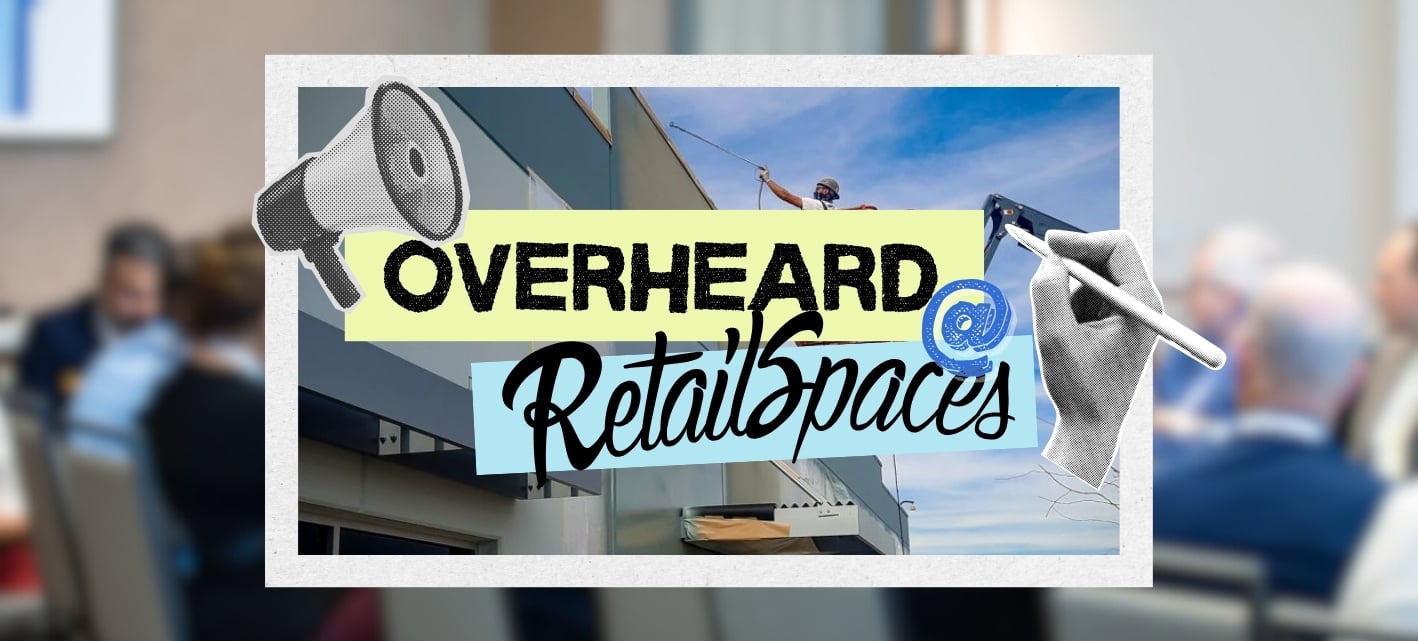

Comments